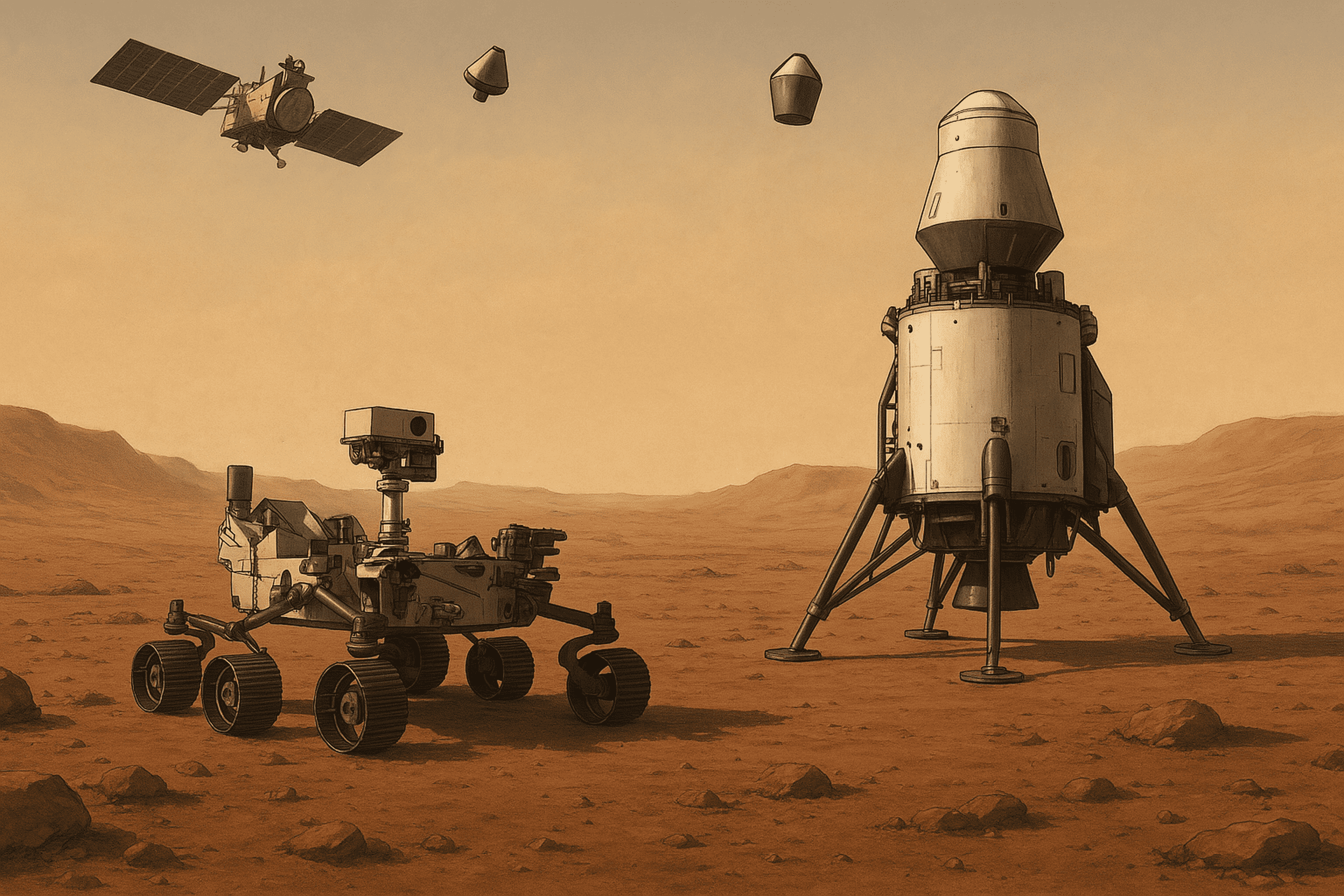Mars Sample Return: Bringing Pieces of the Red Planet Back to Earth
The Mars Sample Return (MSR) mission is one of the most complex and ambitious interplanetary endeavors ever planned. Led by NASA in collaboration with the European Space Agency (ESA), the mission aims to bring Martian rock and soil samples back to Earth for the first time in human history. If successful, it would mark a monumental step forward in our quest to understand the history of Mars and the possibility of past life beyond Earth.
The mission builds on the work of NASA's Perseverance rover, which has been exploring Jezero Crater since 2021. Perseverance is collecting and caching rock samples in sealed tubes, carefully chosen from ancient riverbeds and deltas that may hold biosignatures or clues to microbial life. These samples are stored either on the rover itself or dropped at specific locations on the Martian surface for later pickup.
The Mars Sample Return campaign involves a series of coordinated missions. A Sample Retrieval Lander, built by NASA, is expected to deliver a fetch rover (developed by ESA) to Mars. This rover will retrieve the sealed tubes and transfer them to the lander, which will then load them into the Mars Ascent Vehicle—a small rocket designed to launch the sample container into Martian orbit.
Once in orbit, the container will be intercepted by the Earth Return Orbiter, developed by ESA. After securing the samples, the orbiter will begin its journey back to Earth, eventually releasing the container in a protective capsule that will land safely on Earth, likely in the Utah desert.
Analyzing Martian samples in Earth-based laboratories will allow scientists to perform detailed studies using tools far too large and sensitive to send to Mars. These studies could confirm whether ancient Mars once hosted life, better understand the planet’s climate history, and even improve planning for future crewed missions.
Mars Sample Return
Launch Date: 01/01/2028
Agency: ESA & NASA
